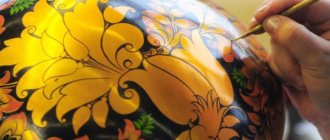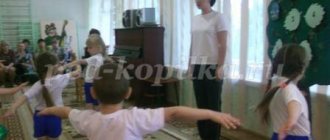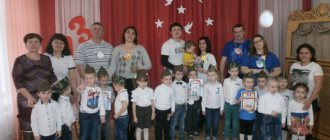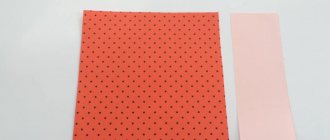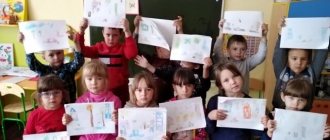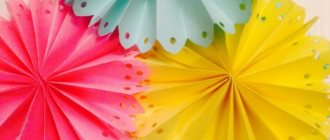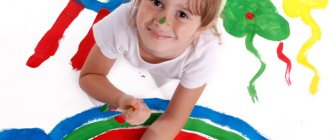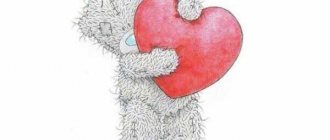• Continue to get acquainted with Gorodets painting, its color, and features.
• Be able to identify the main elements of a pattern.
Tasks:
• Educational: practice drawing Gorodets flowers - baths, roses, observing the sequence of stages of the image; in applying the resin using the tip of a brush.
• Developmental: Develop a sense of composition, the ability to beautifully arrange a pattern in a given shape. • Educational: develop artistic taste and cultivate love and interest in folk art.
Photo gallery: examples of children's work
Pupils of the senior group quite adequately depicted the Gorodets bird Pupils of the senior group quite adequately depicted the Gorodets bird Focusing on the step-by-step drawing scheme, the guys can quite well depict a bird The original basis for work is a template of a wooden spoon The original basis for work is a template of a wooden spoon To begin with, the guys can practice creating a pattern on rectangular base, and then on a dish template Each board has a border of a certain color, which makes it more beautiful Each board has a border of a certain color, which makes it more beautiful The flower arrangements turned out bright and juicy Blue flowers in the Gorodets style look very elegant Blue flowers in Gorodets style look very elegant. The semicircular floral pattern on the plate looks wonderful
Gorodets painting will give preschoolers a lot of positive emotions, because fairly simple elements allow you to create incredibly beautiful compositions. The teacher only needs to think through interesting topics for classes, choosing a suitable basis, and be able to interest children as much as possible in this type of Russian folk craft.
Video materials
A short slideshow accompanied by folk music with photographs of products from Gorodets craftsmen
Suitable for display on a projector.
https://youtube.com/watch?v=PvMa-4MUTEM
Master class “Drawing a berry”
Master class “Drawing underpainting”
Master class “Shadow and revival”
Open lesson on visual arts “Gorodets painting”
Decorative drawing classes expand children's knowledge about folk crafts, music, and folklore. The pupils' vocabulary is actively expanding. Palekh, Khokhloma, Gzhel, Gorodets - these words will be filled with meaning for the children and will be preserved in their memory with bright, fabulous images. Studying the features and techniques of Gorodets painting contributes to the development of spatial and figurative thinking, the ability to independently plan actions and construct a composition. By creating drawings based on Gorodets painting, the children themselves can choose the shape of the workpiece, think over the type of future ornament and choose colors for work. The works of masters from Gorodets are close to children with their colorfulness and simplicity of composition, encouraging independent creativity.
Basic techniques
There are three stages of the technique of drawing pictures in Gorodets painting. Prepare a base of wood and cover it with yellow, less often red or black. On it, with a pencil, the master outlines the location of the main elements and their size. Experienced artists paint with paints without a sketch.
Next, with one movement of a wide brush, draw a circle, highlighting the main parts of the composition, for example the base of a flower. This stage is called “underpainting”. To draw a pattern, use pink, blue, or dark blue paints. They also use yellow, red, burgundy, and black.
The name of the second stage of Gorodets painting – “shade” – speaks for itself. A brush with paint of a darker color carefully draws important details:
- clothing lines;
- petal brackets;
- veins on the leaf.
At the final stage of Gorodets painting, strokes, arcs, and drops are applied with the tip of a thin brush. With their help, the work acquires elegance, the pattern becomes animated. Hence the name of the stage – “revival”. They paint with white and black paints.
To protect the painting from damage, the dried painting is coated with colorless varnish in several layers.
There is also a technique for drawing patterns when the artist wants to depict only flowers. The following elements are used:
- rosean (the largest round flower);
- bud (small rose);
- rose (added bud);
- kupavka (the center of the flower is to the right or left of the center);
- chamomile (many petaled flower with unpredictable color).
To make a rose, you first need to draw a circle with red or pink paint. It is depicted with a wide brush with one or two strokes. Then they begin to “shade” - with a thin brush, using darker paint, highlight the center and the petal-brackets around the entire circle. At the end, they make a “live-up” with white - they apply a lot of dots, droplets, and strokes.
Kupavka is similar in Gorodets painting technique to rosan. The pattern begins with underpainting - a circle is drawn, then its “shadow” begins. Only in this case the center is shifted to the side, the top of the bud is made in the shape of a ball. Next, semicircular petals are drawn from the center to the edges - the closer to the bud, the smaller the petals become. The “revival” is done with white paint; all elements of the interior of the pattern must be drawn.
To depict a rose, draw a bright circle. Petals in the form of semicircles or leaves are added to it, also decreasing towards the bud. In this case, it is not necessary to do “shading”; you can immediately move on to “giving life” using white or black paint. The center is decorated with small brackets and dots. Petals can be “revitalized” with drop strokes.
The easiest way to draw a chamomile. Using a medium-sized brush, make a circle and mark its center. Drop-shaped strokes are drawn from it to the edges. Next comes the “revitalization” of the petals with white paint.
In addition to flowers, Gorodets works always contain a lot of leaves, different in size and shape. They are located in groups of several. The shape of the simplest leaf resembles a pumpkin seed.
Gorodets painting is one of the brightest artistic crafts. Despite the fact that at the beginning of the 20th century it almost ceased to exist, talented craftsmen and artists were able to preserve the traditions of the Gorodets style. In many countries around the world, visitors to museums and exhibitions can see animals, birds, flowers, as well as entire scenes depicting the life of peasants on painted objects. Now this art is national pride.
We also recommend watching a video on our topic.
Art of Gorodets. Origins and modern development of the fishery.
- https://ru.wikipedia.org/wiki/Gorodets_painting
- https://womanadvice.ru/gorodeckaya-rospis-chto-eto-takoe-istoriya-osnovnye-elementy-i-cveta-kakie-est-vidy
- https://www.gpa.cfuv.ru/attachments/article/3566/Painting%20on%20wood%20Seagull%20N.M..pdf
Schemes for working on Gorodets patterns
In drawing classes, simple plots are used to master the elements of painting. But each job must be done in a certain order.
"Bud"
Work on this variety of flowers is carried out in accordance with the instructions.
The color of the buds can be varied, but only within the color scheme of Gorodets painting
- We start with the underpainting. We take red paint with a wet brush, remove the excess and dip it in water again so that the color is washed out.
- Draw a circle - apply pressure with the brush, then draw a semicircle and lower the brush down.
- Next, we do the shading - we take concentrated red and draw half-arcs on the buds, draw dots. Don't forget to hold the brush strictly vertically.
- We use green paint to spice things up - green leaves.
This work can be spiced up, that is, elements can be added.
"Chamomile and Kupavka"
Instructions:
- First we work with daisies.
- We do the underpainting with pink paint (we blur the red paint).
- Using rich red we create a shade - strokes located along the diameter of the daisy. Don't forget to hold the brush perpendicularly downwards.
- Let's start reviving. Making the red core of the flower.
- To brighten it up, use white paint to dilute the shade - alternate black strokes with white ones, and also make dots in the middle.
- We create the underpainting of the kupavka - draw a circle.
- Shading is a drawing of the middle.
- Let's make a preparation - draw white veins-petals in the form of two semi-arcs with jumpers.
"Rozan"
Now we will describe the instructions for working on the “rosan” variety:
- For the underpainting we make a red circle and two leaves on the left and right.
- Using white paint we draw semi-arcs in the upper third of the rose.
- We connect them with strokes.
- We make petals emanating from the lower semi-arc.
- We make vertical strokes in each petal.
- We draw vein lines on the leaves.
Subject painting
This can be a painting in two or three tiers, traditional for the craft. In this case, the main plot is written in the upper part (feast or festivities, for example), while in the lower part there are plots that allow the theme to be revealed. The middle part is usually represented by a floral stripe. If the boards do not have a completely elongated shape, the artist can do without the lower tier: he depicts only the main plot scene, which is surrounded by a floral stripe.
The horseman symbolizes the groom in Gorodets painting
A male figure on a horse is the groom, a modest girl near a birch tree is the bride, with this reading everything is simple
Please note that in scenes of feasts the table is always carefully drawn, and in principle it is not empty, there is a samovar on it, a vase of flowers as a symbol of prosperity
The faces of the heroes of the plot compositions (and this is striking) are turned to the viewer; people turned to three quarters are extremely rare. We can say that the owner of the box or board sees himself (a loved one) in the plot in the circumstances he desires.
You can view all of the above types of Gorodets painting compositions using the example of finished works in the video presented.
